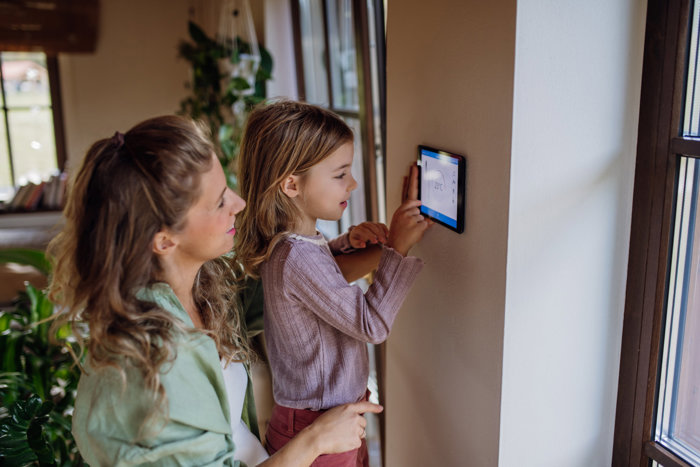Thermostat Energy-Saving Tips
The best temperature settings for your home provide both energy savings and comfort.

Let’s Settle Those Heated Debates Over the Thermostat
Be honest: how many times have you argued over the ideal temperature for your heating and cooling system? Whether it’s the dead of winter or the dog days of summer, keeping an eye on the thermostat can help cut costs on your utility bills without sacrificing comfort.
You can save as much as 10 percent a year on heating and cooling costs by turning your thermostat back 7°-10°F from its normal setting for eight hours a day.

Use energy efficient settings
The Department of Energy provides some general rules of thumb for setting your thermostat. During the summer, try to avoid using central air conditioning if you can and open the windows or use a fan instead. If you must use A/C, though, set the thermostat to 78⁰F only when you’re home. In the winter, you should set your thermostat to 68⁰F.
Watch where you place the thermostat
Your thermostat’s location can greatly affect its ability to get a solid and clear reading. Install your thermostat on an inside wall that is away from paintings, mirrors, plants, and furniture. This can help prevent “ghost readings,” where your thermostat thinks a room is either cooler or hotter than it actually is.

Avoid overcooling/heating
Sometimes, when it’s extremely warm or cold, you may feel the urge to crank up the thermostat to quickly cool off or heat up your home. Unfortunately, this tactic won’t speed up your HVAC, but it will cause your electric bill to skyrocket. Be patient, and you’ll find that your home cools off and warms up just as quickly when you set it to a reasonable temperature.

Install a programmable thermostat
Many of today’s programmable thermostats can be connected to Wi-Fi, so they can be remotely monitored and adjusted from anywhere, even when you’re not home. This can allow you to be more energy efficient by adjusting the temperature when your house is unoccupied, for example.

Reduce the heat settings at night
It’s true that most of us sleep better when the house is a bit cooler than we prefer when we’re awake. To save money on your utility bills, try turning down the thermostat during those cold winter nights. If you have a programmable thermostat, you can set it up to lower the temperature automatically.

Lower your thermostat when guests are over
Any good host wants their guests to be comfortable in their home. Being that our bodies naturally project heat, more people in your house can make it warmer than it normally is. While you may want to turn up the air conditioning in the summer, you’ll want to lower the temperature during the winter a few hours before your guests arrive.


